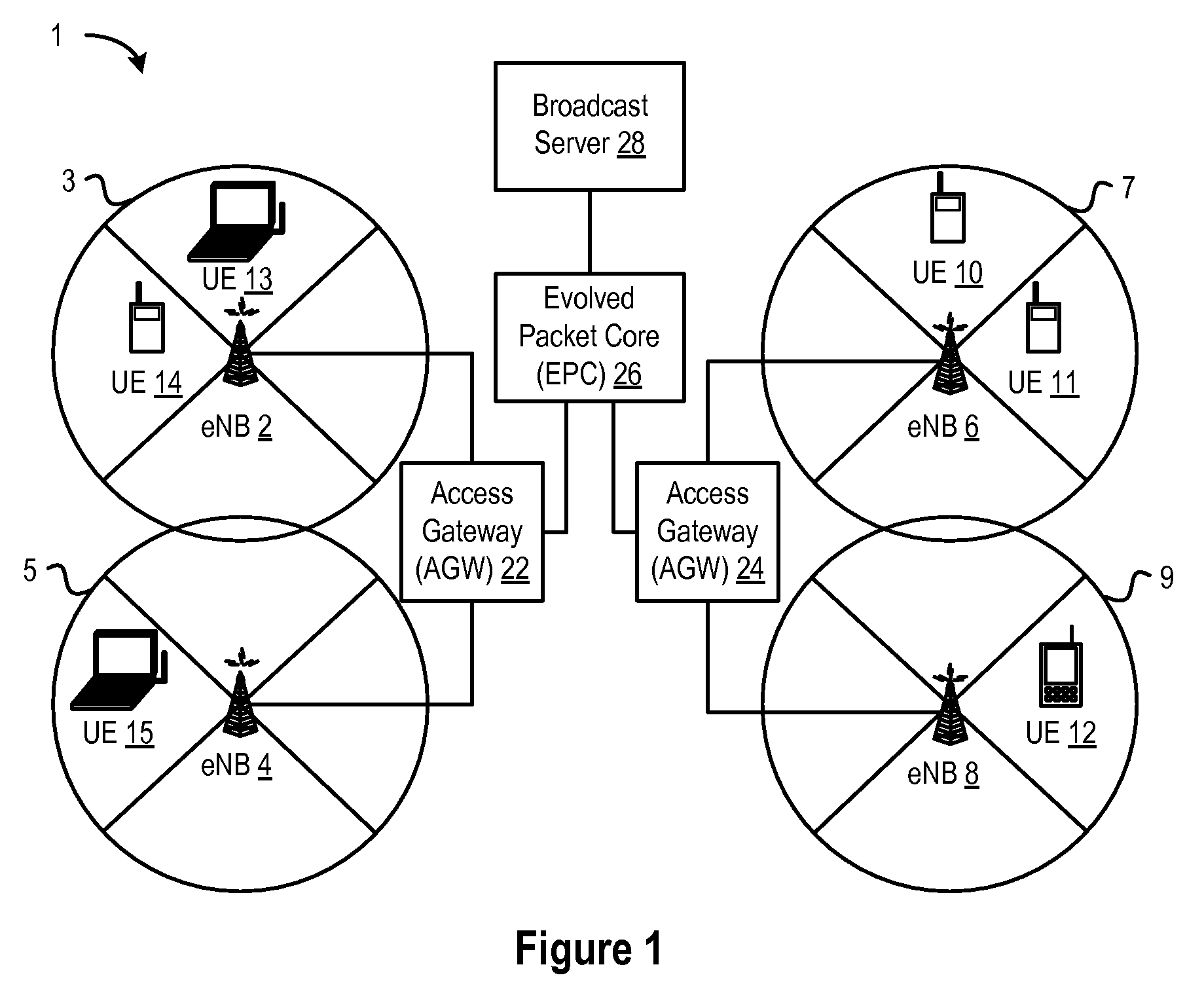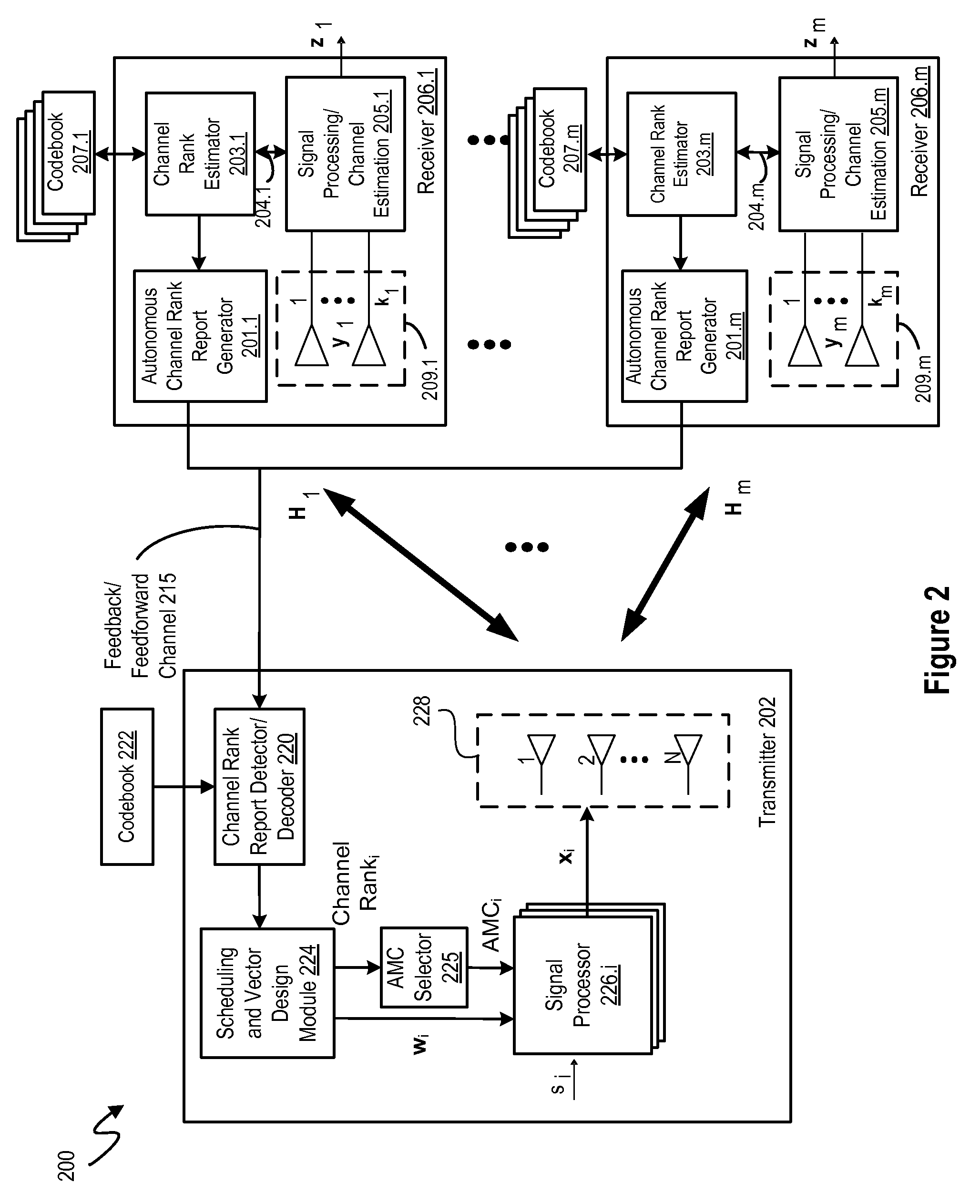Channel Rank Feedback in Multiple-Input Multiple-Output Commnication Systems
a commnication system and channel rank technology, applied in the field of information processing, can solve the problems of overhead loss of channel rank feedback and/or performance loss, limited electromagnetic frequency spectrum capacity, and increasing challenges to improve spectrum usage efficiency
- Summary
- Abstract
- Description
- Claims
- Application Information
AI Technical Summary
Benefits of technology
Problems solved by technology
Method used
Image
Examples
Embodiment Construction
[0019]Embodiments of a system and methodology are disclosed for aperiodic (i.e., non-periodic) feedback of channel-side information, such as channel rank information, to a base station by having the receiver / UE initiate the feedback instead of using a scheduled feedback approach. As will be appreciated, the autonomous feedback of channel-side information may use one of the different types of physical channel structures for uplink scheduling requests, such as those being discussed for inclusion in the emerging LTE platform standard. At the base station, the feedback signal is received over one or more antennas, and the channel side information is extracted and used to precode the transmission signals. For example, instead of using a scheduled channel rank feedback scheme, selected embodiments of the present invention allow the receiver / UE to determine when channel rank feedback should be generated by using any performance-based metric, thereby reducing the average feedback rate. In s...
PUM
 Login to View More
Login to View More Abstract
Description
Claims
Application Information
 Login to View More
Login to View More - R&D
- Intellectual Property
- Life Sciences
- Materials
- Tech Scout
- Unparalleled Data Quality
- Higher Quality Content
- 60% Fewer Hallucinations
Browse by: Latest US Patents, China's latest patents, Technical Efficacy Thesaurus, Application Domain, Technology Topic, Popular Technical Reports.
© 2025 PatSnap. All rights reserved.Legal|Privacy policy|Modern Slavery Act Transparency Statement|Sitemap|About US| Contact US: help@patsnap.com



